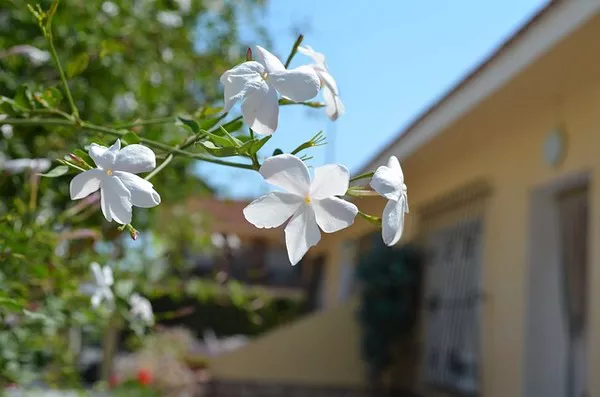Preserving the delicate beauty of flowers through pressing is an age-old practice, dating back centuries. Whether you’re a seasoned botanical artist or a hobbyist preserving memories from special occasions, knowing how to properly store dried pressed flowers is essential for maintaining their vibrant colors and delicate forms. In this comprehensive guide, we’ll explore the best techniques and materials for storing pressed flowers to ensure they remain pristine for years to come.
Understanding the Importance of Proper Storage
Before delving into storage techniques, it’s crucial to understand why proper storage is essential for preserving dried pressed flowers. These botanical specimens are susceptible to damage from light, moisture, pests, and environmental changes. Improper storage can lead to discoloration, loss of shape, and deterioration of delicate petals, diminishing the beauty and value of your collection.
By implementing appropriate storage methods, you can prolong the lifespan of your pressed flowers and maintain their aesthetic appeal. Whether you’re preserving a cherished bouquet or creating botanical art, investing time and effort into proper storage practices will ensure that your floral treasures endure the test of time.
Choosing the Right Materials
The first step in storing dried pressed flowers is selecting the appropriate materials. Choosing acid-free and lignin-free paper is paramount, as acidic materials can cause discoloration and deterioration over time. Archival-quality paper, such as acid-free blotting paper or acid-free cardstock, is ideal for pressing flowers, as it helps maintain their color and structure.
Additionally, consider using a flower press or a heavy book with absorbent paper to press your flowers. Make sure the press or book is clean and dry to prevent any mold or moisture from affecting the pressed flowers.
For storage containers, opt for acid-free and archival-quality options such as acid-free boxes or photo albums with acid-free sleeves. These containers provide a protective barrier against light, dust, and environmental contaminants, safeguarding your pressed flowers for years to come.
Preparing Dried Pressed Flowers for Storage
Before storing your dried pressed flowers, ensure they are thoroughly dry to prevent mold or mildew growth. Pressed flowers should be stored flat to maintain their shape and prevent distortion. Handle them with care to avoid damage to delicate petals or foliage.
Inspect each pressed flower for any signs of moisture or discoloration. If necessary, gently remove any debris or excess moisture using a soft brush or compressed air. Take note of any fragile or damaged specimens that may require extra attention during storage.
Once your pressed flowers are clean and dry, arrange them in a single layer between sheets of acid-free paper or parchment paper. Avoid overcrowding to prevent overlapping, which can cause creasing or damage to the specimens. Place heavier books or weights on top of the stack to ensure even pressure and compression.
Optimal Storage Conditions
Proper storage conditions are critical for preserving the color and integrity of dried pressed flowers. Ideally, store pressed flowers in a cool, dry environment away from direct sunlight, humidity, and fluctuating temperatures. Exposure to light can cause fading and discoloration, while high humidity can lead to mold growth and deterioration.
A dark, climate-controlled closet or cabinet is an excellent choice for storing pressed flowers, as it provides protection from light and maintains stable humidity levels. Avoid storing pressed flowers in attics, basements, or other areas prone to temperature fluctuations or high humidity.
If storing pressed flowers in a display case or shadow box, consider adding UV-protective glass to minimize exposure to harmful ultraviolet rays. UV radiation can accelerate the fading of pigments in pressed flowers, so taking proactive measures to reduce exposure is essential for long-term preservation.
Protecting Against Pests and Damage
In addition to environmental factors, protecting pressed flowers from pests and physical damage is essential for preserving their beauty. Pests such as insects and rodents can feed on dried plant material, causing irreparable damage to pressed flowers.
To deter pests, consider placing natural pest repellents such as lavender sachets or cedar blocks in the storage area. These natural deterrents help repel insects without harming the pressed flowers or compromising their integrity.
Furthermore, handle pressed flowers with care to prevent damage to delicate petals or foliage. Avoid excessive handling, bending, or folding, as this can lead to creasing or breakage. When transporting or handling pressed flowers, use protective sleeves or envelopes to prevent crushing or damage during transit.
Regular Inspection and Maintenance
To ensure the long-term preservation of your pressed flower collection, conduct regular inspections and maintenance routines. Periodically check stored pressed flowers for signs of moisture, mold, or pest infestations. If any issues are detected, take immediate action to address them and prevent further damage to the specimens.
Inspect storage containers for any signs of wear or deterioration, such as yellowing or brittleness. If necessary, transfer pressed flowers to new containers using fresh acid-free paper to ensure continued protection against environmental contaminants.
Consider rotating pressed flowers periodically to minimize prolonged exposure to pressure and compression. This helps prevent indentations and creases from forming over time, preserving the pristine appearance of your pressed flower collection.
Conclusion
Properly storing dried pressed flowers is essential for maintaining their beauty and integrity for years to come. By selecting the right materials, preparing specimens carefully, and creating optimal storage conditions, you can preserve the delicate colors and intricate details of pressed flowers for future generations to enjoy.
Investing time and effort into proper storage practices ensures that your pressed flower collection remains a cherished keepsake, evoking memories and delighting viewers with its timeless beauty. Whether you’re a botanical enthusiast, a hobbyist artist, or simply someone who appreciates the natural world, following these guidelines will help you preserve the delicate splendor of dried pressed flowers for years to come.


